
When considering which base coat to use, there are several things to process through. We will discuss what to look for, troubleshoot, and give suggestions on how to create the perfect end result.
Supplies Used
- Sargent Acrylic Paints in Black, Royal Blue, Green, Orange and Naphthol Red
- Liquitex Basics Titanium White, and Cadmium Yellow
- Additional colors created by mixing above Sargent paints: medium purple and a light orange-red.
- Floetrol Flood
- ArtAdvantage White Canvas Boards
- Mixing Cups: small plastic cups to mix paints
Related: Acrylic Pouring Supplies Guide
Pour Cups
Layering the pour cups was a simple half ounce of each color, using all colors, and then repeat the sequence of layers. The exact same amount and sequence of layering was used for both pour cups. No silicone was used, and the ratio of Floetrol to paint was 3:1 for Sargent paints. The Liquitex titanium white was a 4:1 ratio.
Canvas and Pouring
White Base
The white base was created with titanium white over canvas board. I miscalculated a bit and didn’t have quite enough titanium white to fully cover the canvas, so the corners had some leftover cadmium yellow added just to help the pour flow easier over the edges.
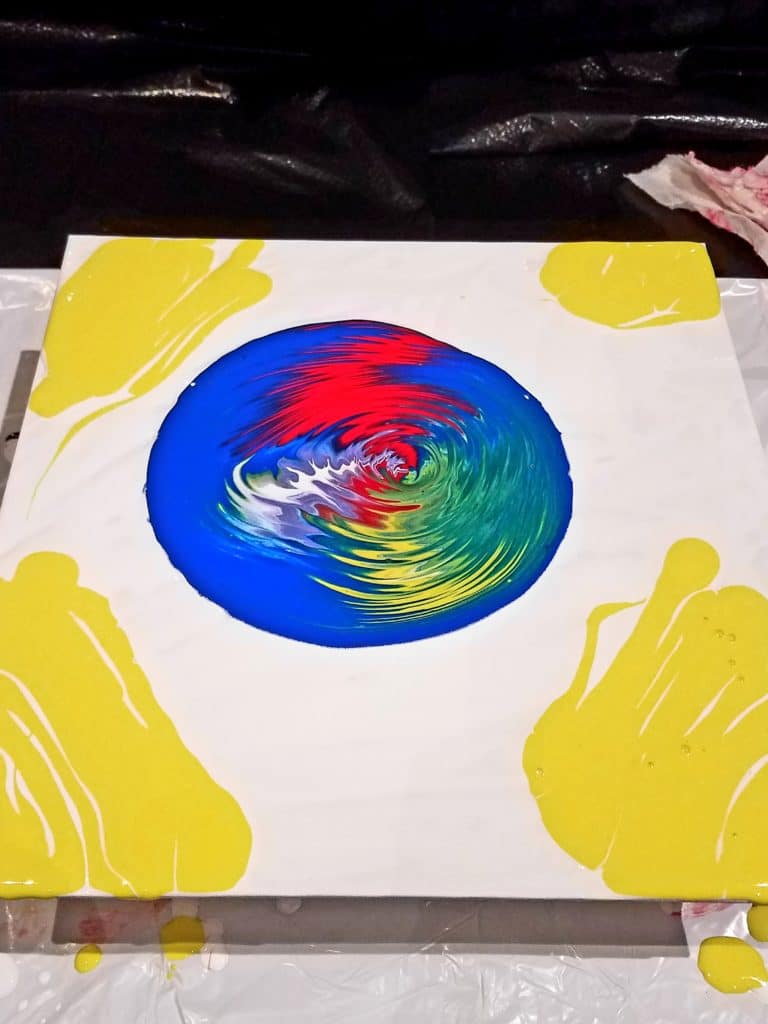
This was a simple straight pour, then tilting and a quick torch to catch any potential bubbles lurking under the paint.
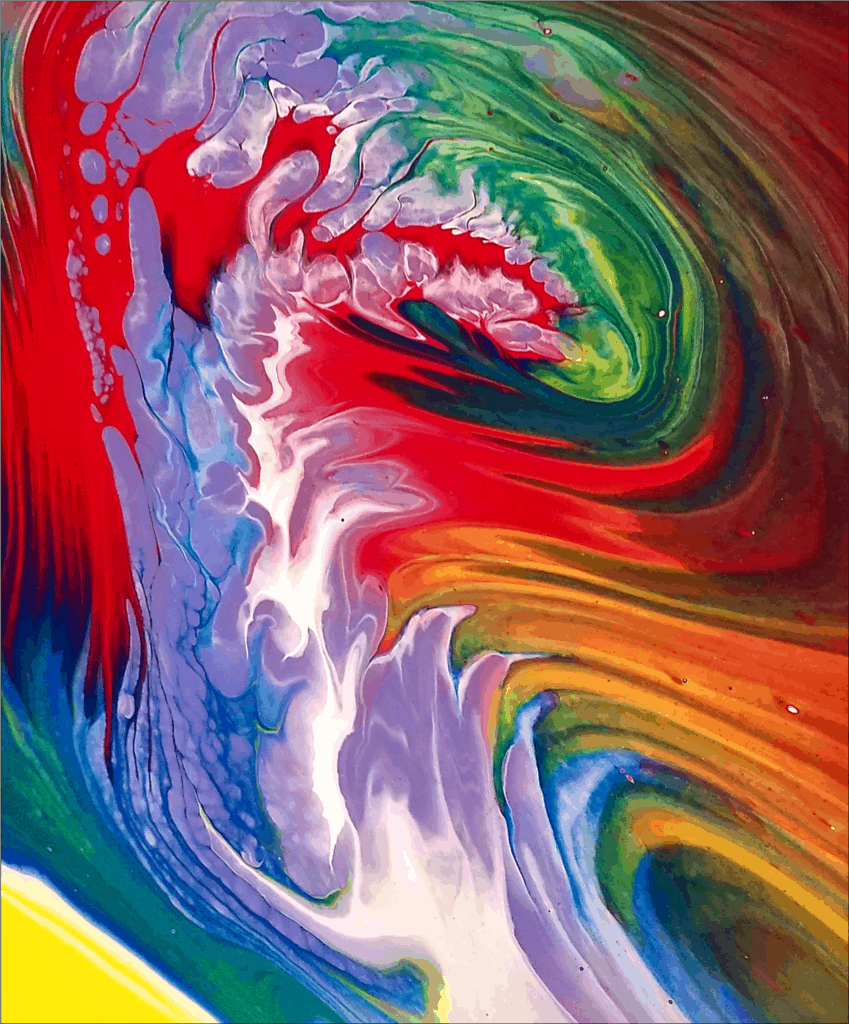
Black Base
I used the Sargent black paint over canvas board for the black base. The Sargent black is not dense with metal pigments, so there will be a couple of issues I will be discussing later in the comparison talking about inorganic pigments.

Again this was the exact same type of pour; tilting and torching; but as you can see the results are extremely different.
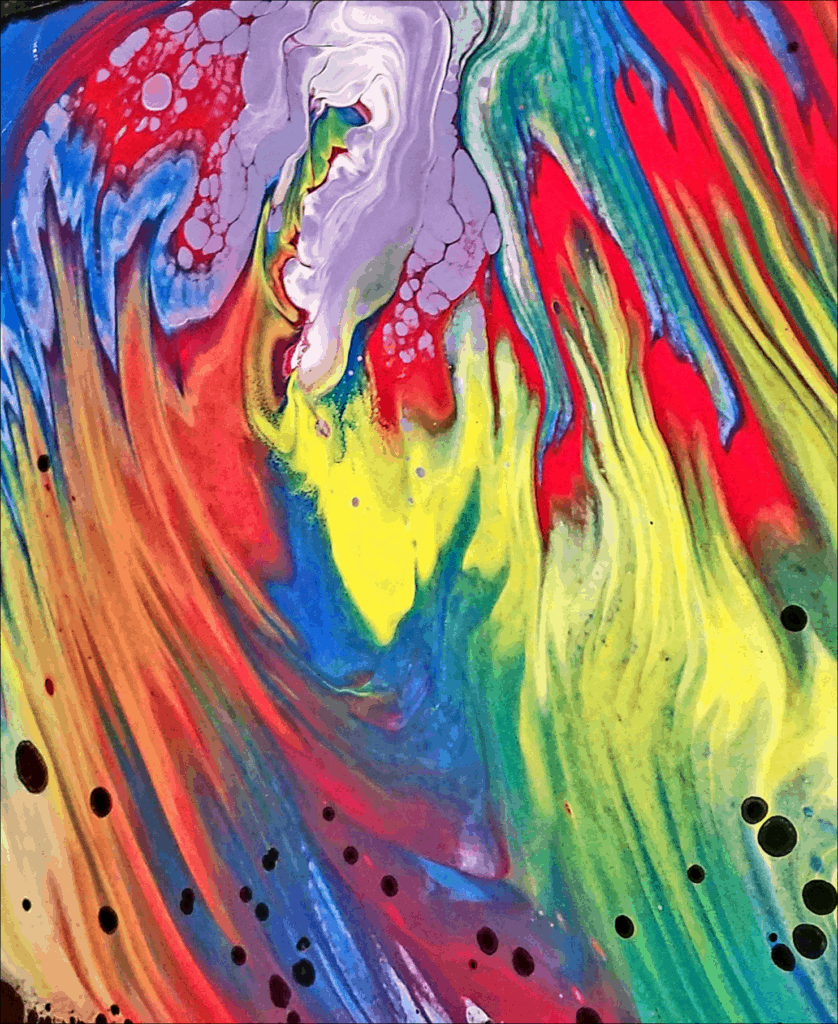
Comparison
Looking at both samples side by side, there are two things that stand out.

Color Variation
When you pour over a titanium white base you will keep the integrity of the colors being poured on top. The white base acts like a mirror to reflect the color, so all your original paint colors will pop off the canvas.
Using a black base will still give you nice color, but they may not be as bright and vibrant as pouring over the white. Each color seems to be a little muted, more subtle than those poured over the titanium white base.
Inorganic Pigments
Here is where we talk about inorganic pigments, in this section we are focusing on “metal” pigments. Most readers understand that using titanium white is the preferred way to obtain cell formation, especially in a flip cup. The reason for this is the metal pigments in titanium white, quite simply (titanium) is a metal. When this is added to the paint, it literally makes the paint heavier.
Take a look at the two sample pours side by side again.
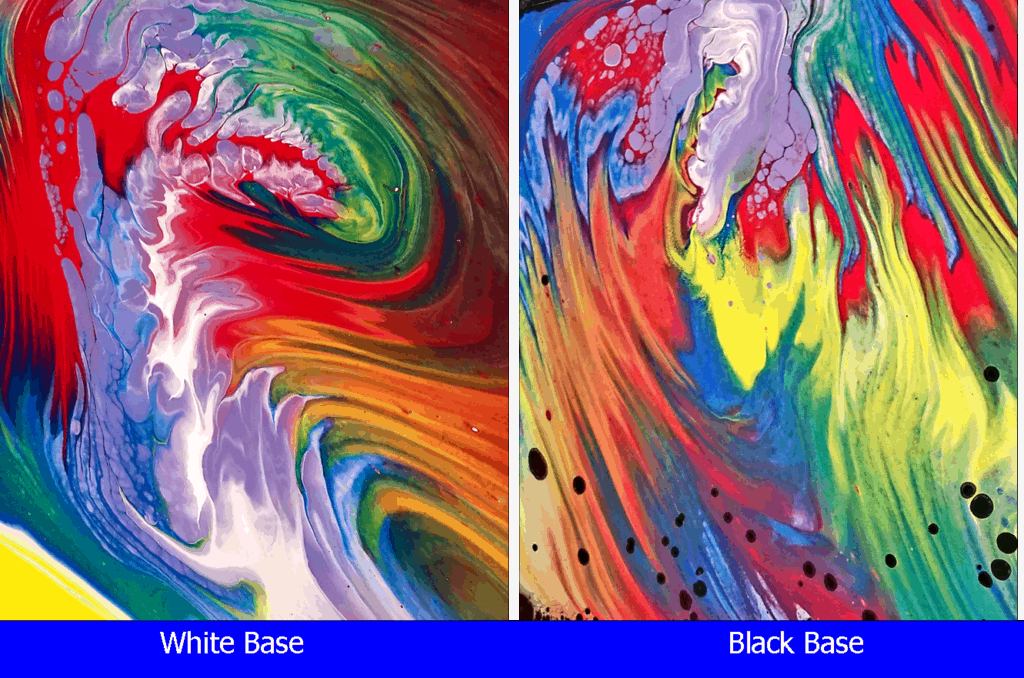
White base: The titanium white base has very distinct— sharp lines, lots of contrast between the colors and no real cells forming. The reason for this is the (titanium) white is on the bottom, so the poured paints simply float on the top.
Black base: Now, look at the Sargent black base which in contrast to the titanium white base, is not dense with those metal pigments. I used the titanium white in the pour cup, so that you can see how the denser metal-pigmented, titanium white sinks into the non-pigmented black paint below forming all those black cells. The lines are not as sharp, due to some paints in the pour cup being denser so they simply slipped under the black base, causing them to blur into each other.
Related: Acrylic Pouring Cells Guide
What does this all mean?
The quick fix is when you purchase your black paint or “any paint color” you want to use as a base coat, be sure it has metal-pigment added.
How to know if your paint contains these pigments?
It’s actually very simple, any acrylic paint containing metal pigments will typically say so on the label, or show in the ingredients. Look for the words titanium, titanium dioxide, cadmium or iron oxide.
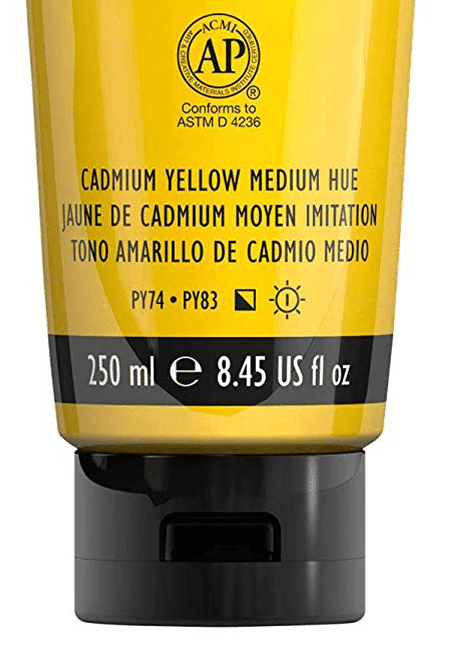
These are metals that literally make the paint heavier which allows them to sink to the bottom, similar to your tried and true titanium white. Remember, this tip is accurate for any color you want to use as your base coat.
Here is one more final pour where I used a red base coat, just for an additional example using something other than white as a base. You’ll notice all the white areas have a slight pink tint—which is purely from the red base below.
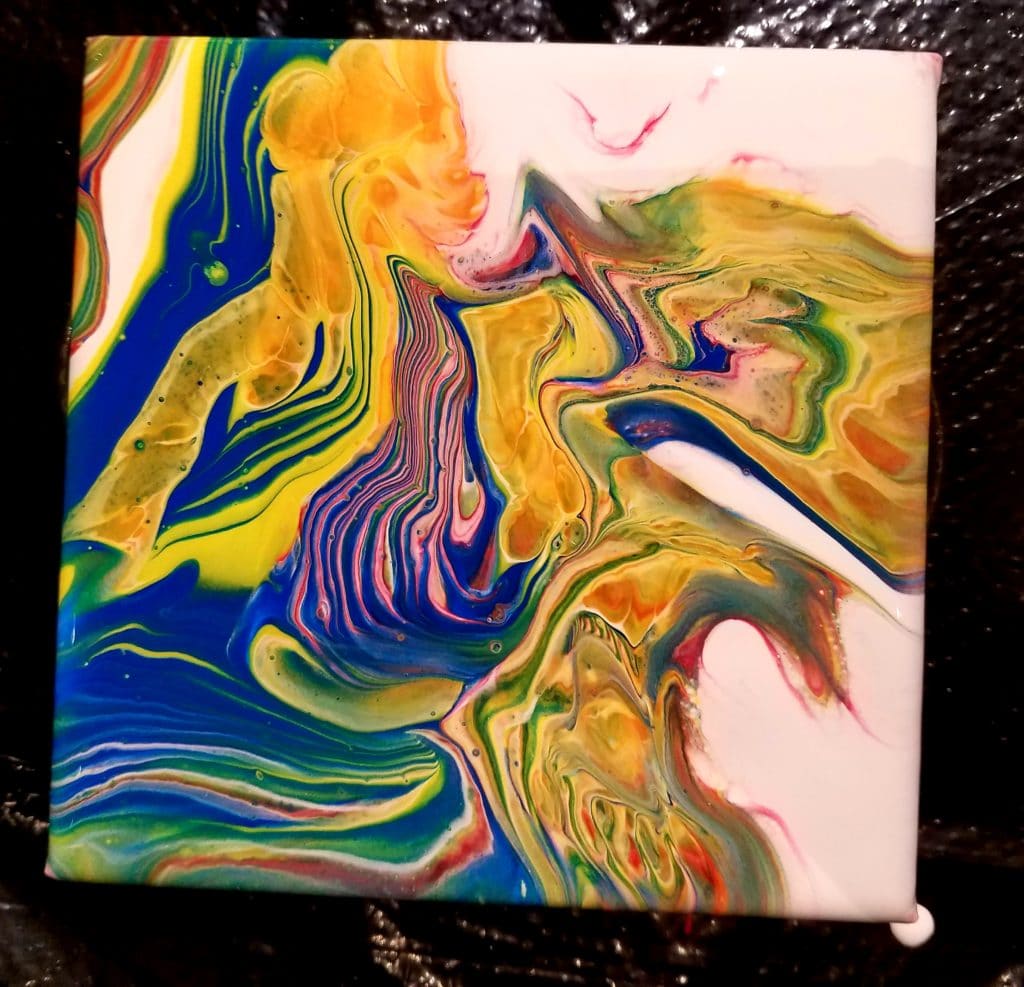
Hopefully this information will allow you to create the pours you desire, using any color you wish as your base. Get your creative on folks by trying different base colors for a whole new look!
Read Next
Since she began creating art in 2007, Tina Swearingen’s focus has evolved from repurposed conceptual art into the creativity and flow of acrylic pouring. Her pours are inspired by the movement and colors of Southern Arizona’s amazing thunderstorms, and the majestic beauty of the Pacific Northwest, which she now calls home.

Do you use ONLY paint for the base or add pouring medium? Thank you for th is WONDERFUL site!!
Use pouring medium or Floetrol in your base paint too.
Absolutely you want to use medium in all your paints, but remember no silicone in the base paint.
Very good article! Wе are ⅼinking to this great content
on our website. Keep up the great writing.
Thank you so much! We appreciate the link to acrylicpouring.com!
I guess that’s why Mars Black works so well as an underlayer — it’s an iron oxide, a metal pigment. Thanks for the insight.
That’s what we are here for. I love using Mars black as a base myself 🙂
thank you Tina. this was very informative. It also helped me understand why I didn’t get the result I was hoping for in a recent pour I did. I’ll have another go using the same colours BUT using titanium white as the base instead of my usual plain acrylic white. It also inspired me to use different colour bases instead of just black or white.
Terry, I’ve used a wide variety of colors for bases, even a few with a metallic base. Basically, try what you want, and learn from each. Keep notes so you don’t forget when you try something new. Its a huge advantage when you start collecting a wide variety of paints and colors.
Thanks Tina. Love the informative article with pictures. Thanks for the work you put into this! FYI, cadmium yellow HUE does not have cadmium in it. Anytime we see the word HUE in the paint description, it means the manufacturer has created a paint to look like the original. Golden brand cadmium yellow hue has these pigments: Diarylide Yellow HR-70 Oxides of Nickel, Antimony and Titanium Arylide Yellow. While Golden’s cadmium yellow has this pigment: Cadmium Zinc Sulfide. No reason you should know this. I am just a painting geek and used to be an art teacher. But you seemed like someone wanting to know and understand the details, so I thought I would explain. And this is true of any paint described as a hue . . . it’s not the same as the original paint not called a hue. Often it is a less expensive or less toxic version that looks similar, but often it handles differently in mixes than the original.
So informative thank you, and thanks also to Deborah Coles – I wondered why some paints have hue after their cadmium colours. Now I know!
Thank you Debi, I am still learning. Great information, I always appreciate learning something new! I was an adult educator before becoming an nurse, so I totally get the need to teach others. Thank you.
Olá,
Gosto muito desta técnica. Acho-a maravilhosa. Inclusive já adquiri o e-book ” Acrilic Pouring”, porém ainda não consegui experimentá-la por estar me tratando
para um câncer de mama, logo irei retomar minhas pinturas.
Gostaria que me mandassem os5 fundamentos para jatos de acrílico. Já preenchi
várias vezes o formulário do pedido, mas nunca me mandaram.
Já adquiri o curso de Deborah Coles. Achei muito bem explicado.
Meu nome é Sandra Maria Moreira Almeida para que possam confirmar minha participação no curso de Deby.
Muito agradecida
Sandra
Hi Sandra, I am so sorry to hear about your health concerns. As a former nurse I understand what you are dealing with somewhat. I can also say as a chronic health patient myself, I know how much this form of painting has meant to me. There are times I cannot paint due to exhaustion or pain but I get in there every time I can as it always lifts my spirits. My thoughts and prayers are with you.
As for the request, I have forwarded this to the web department so that they can help you.
Take care my friend!
I have always used black gesso for the base.
I may still use black acrylic in my pour but I Prime with the black gesso and it works so well if I don’t cover my canvas ..(on purpose) Now I gotta check if my gesso has those ingredients. Nice article. Thank you:)
Bev, the black gesso does a nice job covering the canvas, but using the black paint as well, will provide the smooth surface for the paint to flow over. Also, it makes sure you don’t end up with silicone on the canvas which can be a real issue. Whatever works for you – if the gesso alone is working, more power to ya.
Hello everyone, evidently there is a problem within the system, as I have not been getting notices about any comments. I am so sorry! I have asked that it be fixed and will be going back through all my posts to answer any comments you may have left. Tina